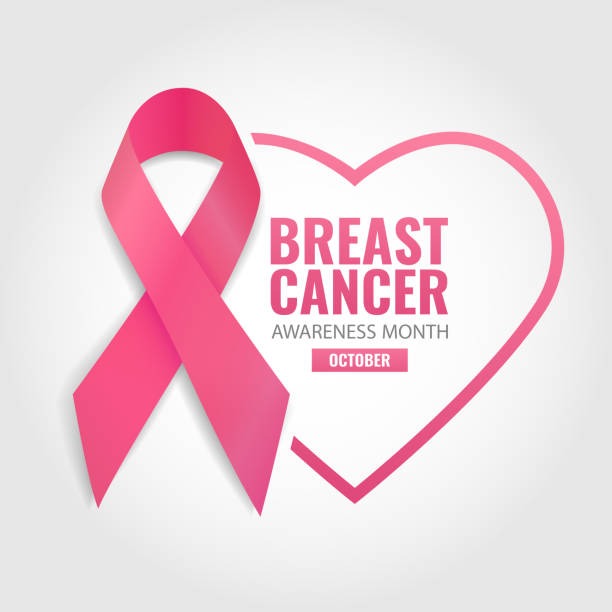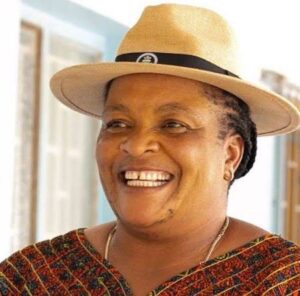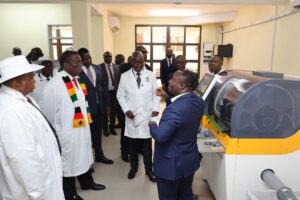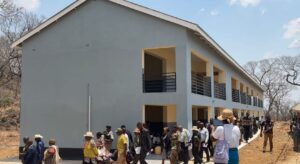Pink October – Nobody Fights Alone
5 min read
Every October, the world turns pink. Landmarks glow in pink lights, hospitals unite in awareness campaigns, social media becomes a canvas of pink ribbons, and millions of people pause to reflect on a disease that has touched nearly every family in one way or another—breast cancer.
This global movement, known as Pink October, is a powerful reminder that in the fight against breast cancer, nobody fights alone.

Breast cancer is the most commonly diagnosed cancer among women worldwide. According to the World Health Organization (WHO), over 2.3 million women were diagnosed with breast cancer in 2023 alone, and more than 685,000 lives were lost to the disease.
In Africa, breast cancer has now overtaken cervical cancer as the leading cause of cancer deaths among women. Zimbabwe is no exception.
The Cancer Association of Zimbabwe (CAZ) estimates that the country records over 7,000 new cancer cases annually, with breast cancer among the top two most diagnosed cancers in women.
Yet, amidst the sobering statistics, Pink October brings a message of hope, unity, and survival.
Pink October is not just a symbolic month. It is a global call to action—for early detection, improved access to treatment, emotional support for patients, and stronger health systems.
“Early detection saves lives. When breast cancer is caught early, treatment is far more effective, and survival rates are significantly higher,” says clinical oncologist, Dr. Tatenda Mupandawana.
She stresses that mammograms and regular breast self-examinations are crucial in reducing mortality.
However, in many low- and middle-income countries, including Zimbabwe, late diagnosis remains the biggest challenge.
Limited access to screening services, high treatment costs, fear, stigma, and lack of awareness often lead women to seek medical help only at advanced stages.
“We are losing mothers, sisters, wives, and daughters to a disease that can be treated if detected early. Awareness must lead to action,” adds CAZ spokesperson Lovemore Makurirofa.
Breast cancer develops when abnormal cells grow uncontrollably in the breast tissue. While most cases occur in women, men can also develop breast cancer, though at a much lower rate.
Common risk factors include:
• Family history of breast or ovarian cancer
• Genetic mutations (BRCA1 and BRCA2)
• Obesity and poor diet
• Alcohol consumption
• Hormonal therapy
• Environmental factors
• Aging – risk increases after 40
However, up to 60% of women diagnosed have no known risk factors, according to WHO. This proves that no woman is immune, making screening essential.
Knowing the warning signs can save lives. Women are encouraged to look for:
• A painless lump in the breast or armpit
• Changes in breast shape or size
• Nipple discharge (especially blood-stained)
• Skin dimpling or retraction
• Persistent breast pain
• Nipple inversion (turning inward)
• Swelling or redness on the breast
If any of these signs appear, immediate medical consultation is advised.
Beyond the medical battle, breast cancer brings emotional, psychological, and financial challenges. Patients often face anxiety, depression, fear, and isolation. This is why the theme “Nobody Fights Alone” is especially important.
Support—from family, friends, faith communities, healthcare workers, survivors, and organizations—plays a crucial role in recovery.
Breast cancer survivor, 38-year-old mother of two, Ruvimbo Moyo, shared her story with Zim Global Media:
“When I found a lump, I kept quiet for months. I was afraid—it felt like a death sentence. By the time I went to the clinic, the cancer had already spread. What saved me was the support I got from my sister and the prayer group at church. Treatment was tough, but love kept me strong. Nobody should feel alone in this journey.”
Ruvimbo’s story mirrors that of thousands of women across Zimbabwe and Africa—battling not only disease but also stigma. In some communities, cancer is still seen as a curse or a result of witchcraft.
Many patients endure silent suffering because of cultural misconceptions. Pink October seeks to break this silence.
Cancer treatment is expensive. Many patients cannot afford chemotherapy, surgeries, or radiation therapy. In Zimbabwe, treatment at public hospitals like Parirenyatwa and Mpilo Central Hospital is more affordable than private facilities, but costs remain beyond the reach of many families.
Major organizations such as the Cancer Association of Zimbabwe, Island Hospice, Zimbabwe Breast Cancer Association, and Zimbabwe Red Cross Society continue to step in to provide education, counseling, home-based care, and sometimes financial assistance. But the need is still far greater than available resources.
WHO Africa Director Dr. Matshidiso Moeti recently said:
“Cancer care in Africa should not be a privilege for the rich. Health equity demands that all people—regardless of location or income—have access to screening and treatment.”
Every year, Pink October events bring communities together. Awareness walks, free screening clinics, fundraising campaigns, survivor conferences, corporate wellness days, and school health outreach programs take place across Zimbabwe and beyond.
This month, hospitals, clinics, churches, community groups, media houses, and corporate organizations are being encouraged to participate in life-saving initiatives:
- Offer free or subsidized breast cancer screening programs
- Educate women about breast self-examination
- Support patients through hospital visits and donations
- Wear pink every Friday to show solidarity
- Promote cancer awareness on social media using #PinkOctober
- Fundraise for cancer treatment centers and support groups
Breast cancer is often seen as a “women’s disease,” but men are essential partners in the fight. Husbands, brothers, fathers, and sons can help by encouraging the women in their lives to get screened, offering emotional support, and helping to challenge harmful cultural beliefs.
Men are also at risk—though rare, male breast cancer accounts for 1% of cases globally. Men should seek medical attention if they notice any abnormal changes in their chest area.
You don’t need to be a doctor to save lives. Small actions make a big difference.
Women aged 20–39 – monthly breast self-exam + clinical exam every 3 years
Women aged 40+ – annual mammogram + clinical breast exam
Know your family history
Maintain a healthy lifestyle – exercise, eat well, reduce alcohol
Seek medical care quickly if you notice a lump
Breast cancer is not a death sentence. Millions of survivors around the world are living proof that with early detection, proper treatment, and strong emotional support, recovery is possible.
Pink October reminds us of one truth: Nobody fights alone. Not the patient, not the caregiver, not the survivor.
Together, communities can fight ignorance with education, fear with hope, and pain with love.
Let us turn awareness into action. Let us support the fighters, celebrate the survivors, honour the taken, and never give up hope.
This October, wear your pink not as a fashion statement—but as a promise. A promise that nobody fights alone.







